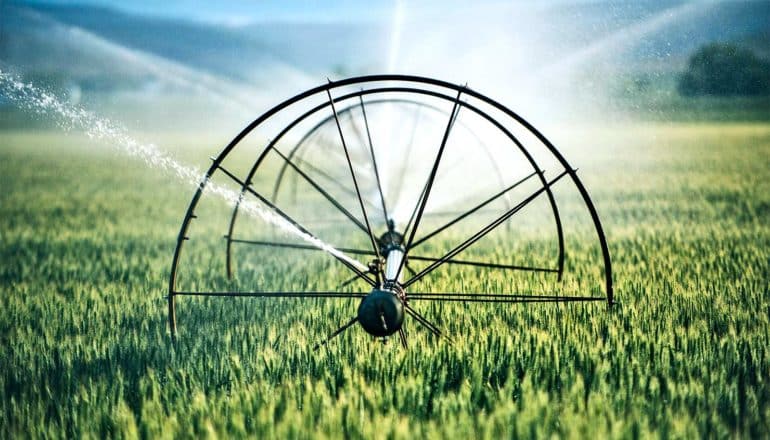
Expanding irrigation has dampened anthropogenic warming during hot days, with particularly strong effects over South Asia, researchers report.
Large-scale irrigation is one of the land management practices with the largest effect on climate conditions—and especially hot extremes—in various places around the world. Yet how the climatic effects of irrigation compare to those of global warming is largely unknown.
For their new study in Nature Communications, researchers examined the influence of irrigation more closely. They used observational data and global climate simulations to isolate the climatic effects of irrigation from the warming that other natural and human climatic drivers induce, predominantly greenhouse gas emissions.
Extreme heat
The observational and model results consistently highlight a strong irrigation-induced cooling during warm extremes in intensely irrigated regions such as Southern Europe, North Africa, South Asia, and the United States.
The cooling effect of irrigation over these regions partly or completely offset the effect of global warming contributing to more frequent and intense heat extremes—in South Asia in particular. Over South Asia, irrigation locally reduced the likelihood of hot extremes by a factor of 2-8, with particularly strong effects over the Indo-Gangetic Plain.
“This means that, while global warming increases the likelihood of hot extremes almost globally, in some regions, irrigation expansion cancels or even reverses this effect,” says Wim Thiery, who performed this research while a postdoc at the Institute for Atmospheric and Climate Science at ETH Zurich.
“In summary, we showed that irrigation expansion has regionally masked the historical warming of hot extremes from anthropogenic greenhouse gas emissions and all other climate drivers combined,” says Sonia Seneviratne, professor for land-climate dynamics.
Will irrigation’s benefits continue?
While the irrigation-induced cooling is mostly limited to irrigation hotspots, these are often located in densely populated areas. Around one billion people currently benefit from the dampened increase in hot extremes because irrigation massively expanded—it more than quadrupled in area—throughout the 20th century.
The findings show that irrigation substantially reduces human exposure to warming of hot extremes, but whether this benefit will continue remains unclear. Diminishing groundwater reserves (fossil water) and retreating glaciers (e.g., in the Himalaya) may decrease water supply in the long term.
“Besides a possible stagnation or even decrease in the global area being irrigated, agricultural water use may potentially become more efficient to meet sustainable development goals related to water resources availability, food security, and biodiversity,” Thiery says.
In that case, irrigation-induced cooling might level off, leading to accelerated warming across the hotspots. The researchers plan to explore this with their ongoing research.
Source: ETH Zurich
The post Irrigation keeps things cool in extreme heat appeared first on Futurity.
from Futurity https://ift.tt/35XDu0P
No comments:
Post a Comment